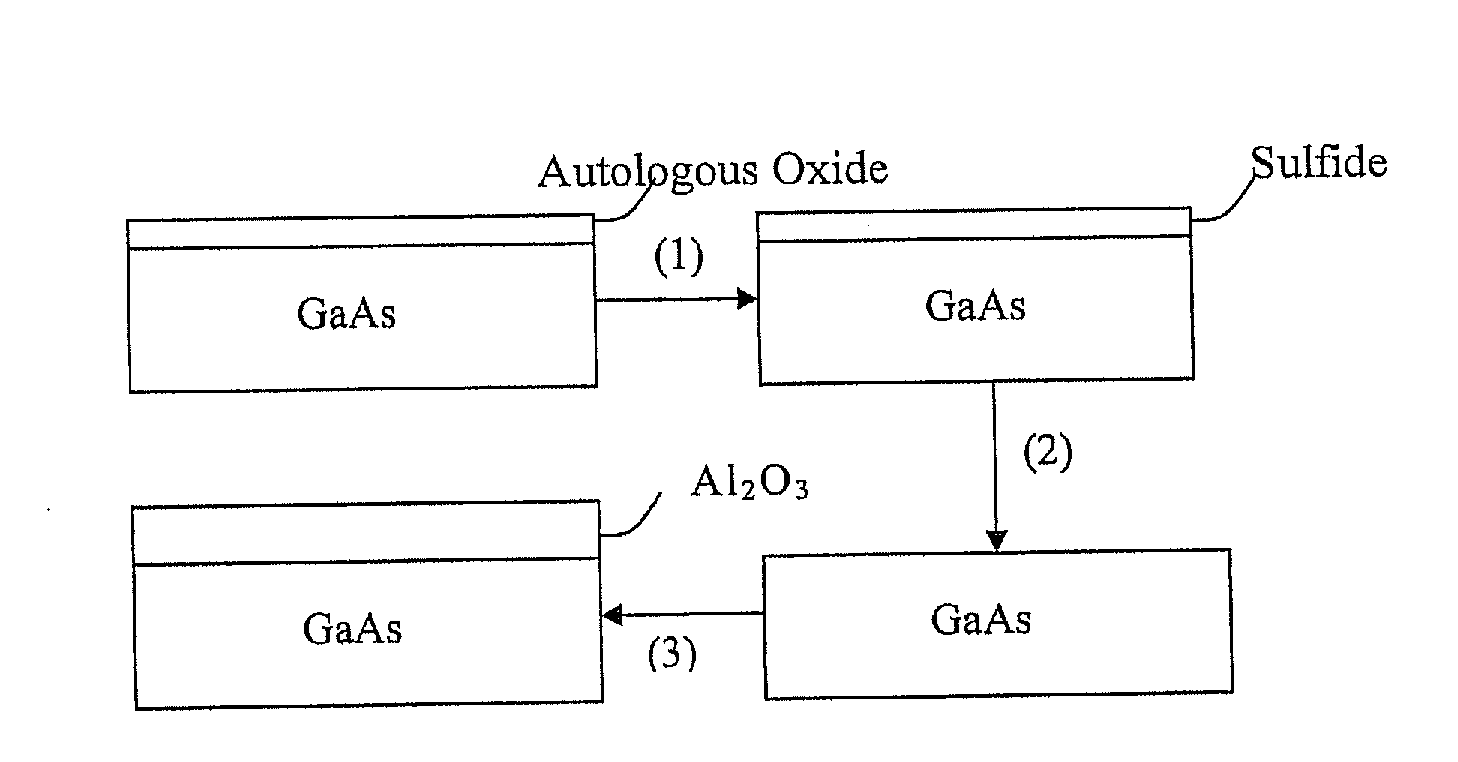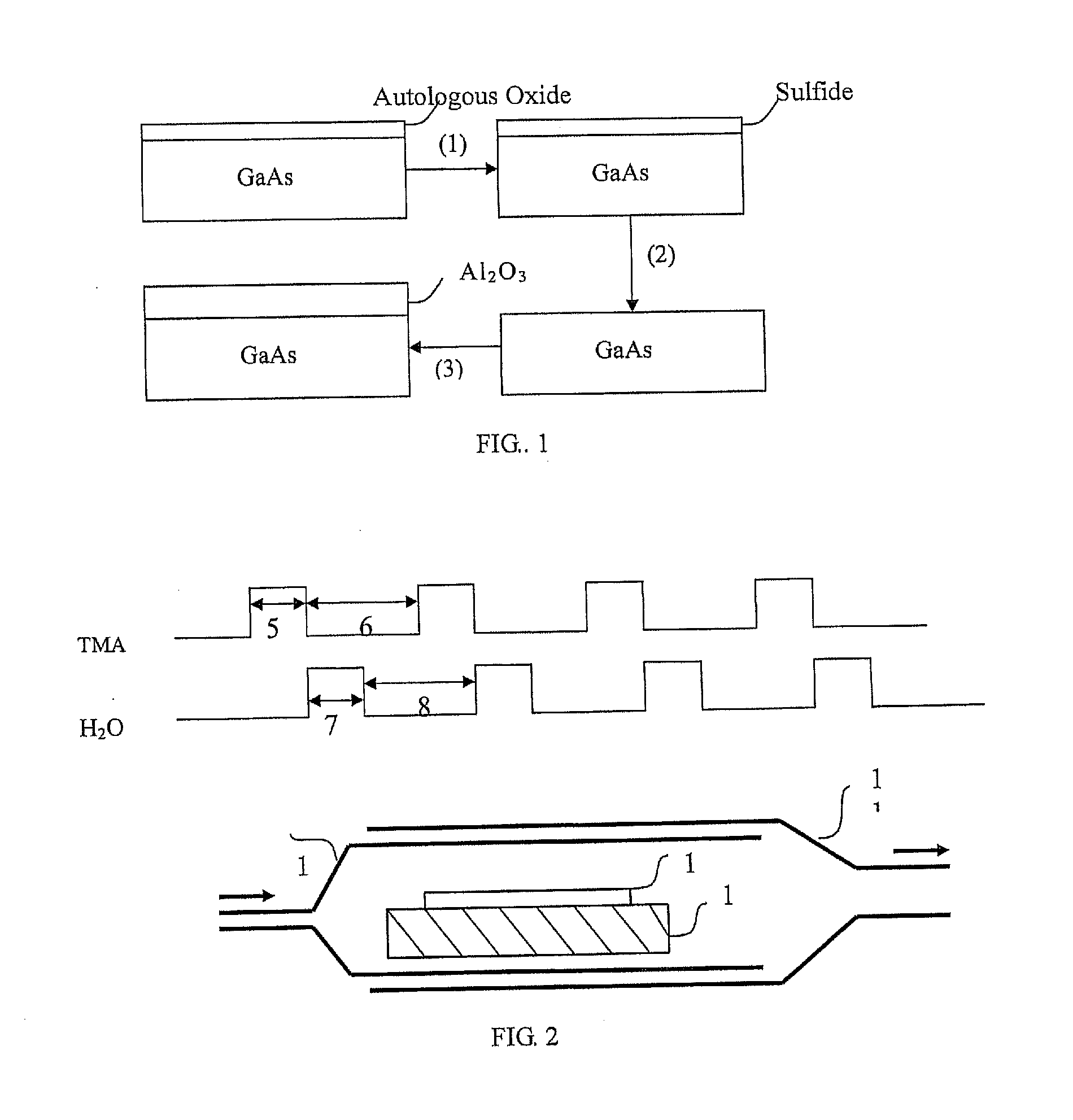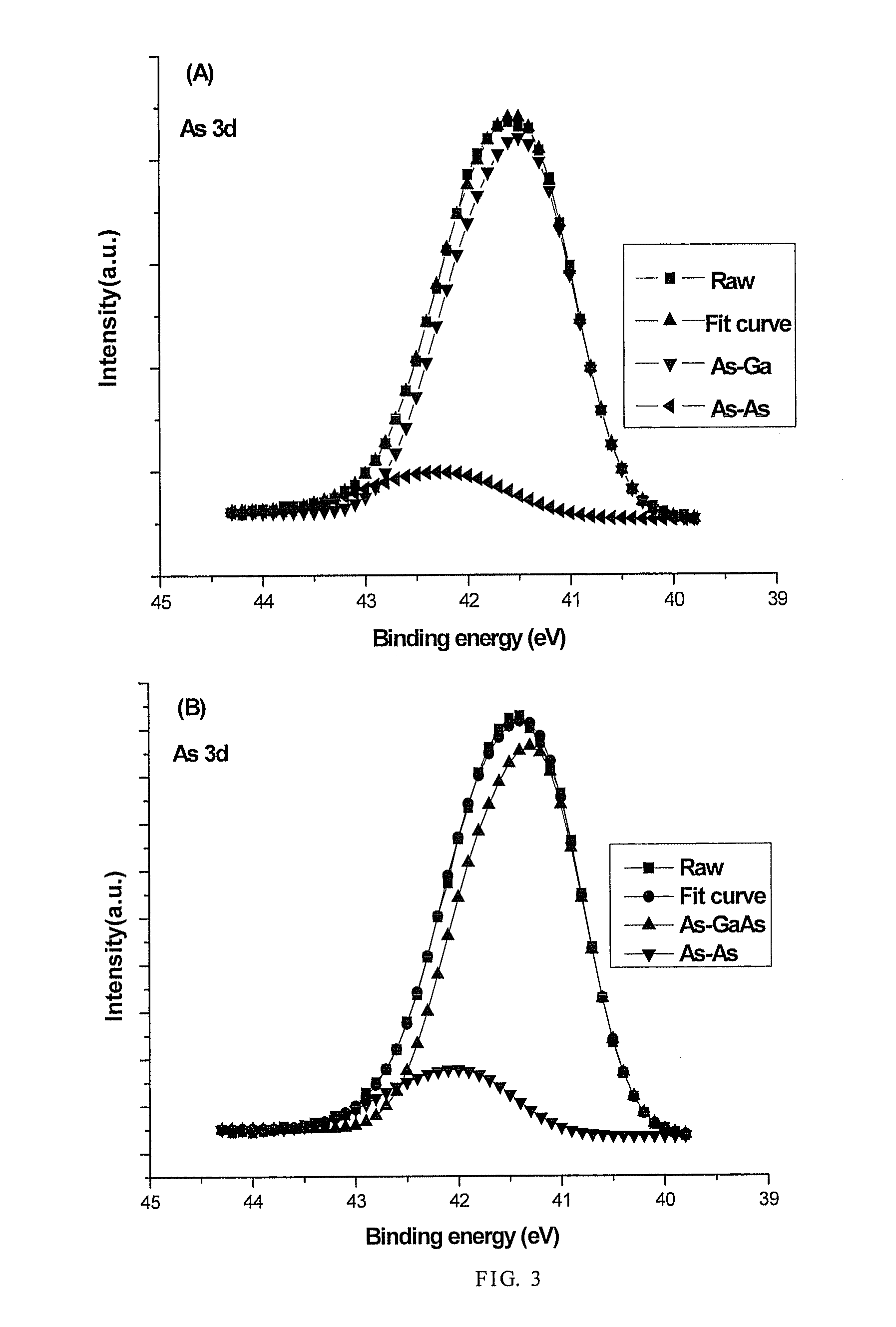Method for cleaning & passivating gallium arsenide surface autologous oxide and depositing al2o3 dielectric
a technology of autologous oxide and gallium arsenide, which is applied in the field of cleaning & passivating gallium arsenide (gaas) surface autologous oxide and depositing al2o3 dielectric, can solve the problems of many surface defects of gaas material, lack of proper dielectric material, and inability to use in microelectronic and optoelectronic devices
- Summary
- Abstract
- Description
- Claims
- Application Information
AI Technical Summary
Benefits of technology
Problems solved by technology
Method used
Image
Examples
embodiment 1
[0046]This experiment uses an n-type (100) crystal orientation GaAs sample doped with Si with a doping concentration of about 1.0×1017 cm−3. After cleaving the GaAs sample into small samples, successively add them into richloroethylene, acetone, alcohol and deionized water to conduct ultrasonic cleaning for 5 minutes so as to remove grease and organics from the surface. Then, put the GaAs sample in the diluted HF solution with a concentration of 2%, after 2 minutes of cleaning, rinse off the redundant HF solution with deionized water, thus rinsing off oxides from the GaAs surface. Then, soak it in ammonia water with a concentration of 10% for 5 minutes, and eliminate the oxide through the reaction between the alkali and the autologous oxide of GaAs; in addition, this step can also be used to neutralize the previous HF solution.
[0047]Prepare the mixture solution with 2 g of CH3CSNH2, 4 ml of absolute ethyl alcohol and 1 ml of ammonia water, use clean tweezers to take out the GaAs sam...
PUM
| Property | Measurement | Unit |
|---|---|---|
| Time | aaaaa | aaaaa |
| Time | aaaaa | aaaaa |
| Time | aaaaa | aaaaa |
Abstract
Description
Claims
Application Information
 Login to View More
Login to View More - R&D
- Intellectual Property
- Life Sciences
- Materials
- Tech Scout
- Unparalleled Data Quality
- Higher Quality Content
- 60% Fewer Hallucinations
Browse by: Latest US Patents, China's latest patents, Technical Efficacy Thesaurus, Application Domain, Technology Topic, Popular Technical Reports.
© 2025 PatSnap. All rights reserved.Legal|Privacy policy|Modern Slavery Act Transparency Statement|Sitemap|About US| Contact US: help@patsnap.com



